Back pain is only a symptom, an external manifestation of some disease or pathology.Any pain has a reason.There are many causes of back pain.
Patients often suffer from back pain caused by overloading of muscles and ligaments.Unfortunately, if the cause was only in the muscles, it would be very easy to relieve the pain.For example, a massage that should bring comfort.But massage does not always help because it removes the cause of pain.
Acute low back pain can be caused by a herniated disc or a herniated disc.If the herniated disc is right-sided, pain in the right side, pain in the right side, or pain in the right leg, or pain in the right leg (with a large hernia).If the hernia is on the left side, you may feel pain in the back on the left side and you may worry about the pain on the left side.
If the hernia is large and compresses the left lumbar root (radiculitisOn the left), then a lumbago may occur in the left leg and the pain may start in the left leg.A large hernia often leads to a distortion of the posture with sharp "bending" pain (antalgic position of the torso) when it cannot be corrected.
Back pain in the lower right can be the result of a hernia or problems with the correct joints of the spine or pathology of the sacral region (right iliosacral joint).
Pain in the area of the left shoulder blade (or pain under the left shoulder blade) can be the result of either a hernia or joint pathology or heart problems.This kind of pain can cause angina pectoris and heart attack.Pain between the shoulder blades occurs not only with spinal pathology and osteochondrosis, but also with stomach diseases (gastritis, ulcers, cancer, etc.) and often in the intestines.
Cholecystitis and cholelithiasis most often cause pain in the right under the right shoulder blade and pain.Gallbladder pathology often manifests itself as pain under the right rib.You need diagnostics.
Protrusionbottoms, are more often incidental findings on MRIrarelyContinue without any pain.Diskinility- It is not such a common cause of severe back pain.The formation of a hernia, for example, when lifting heavy objects, causes lumbar or thoracic lumbago (sharp pain in the back).If it hurts constantly, the back pain, the hernia found on the MRI has nothing to do with anything.The causes of such persistent pain are often different. Diagnostics will help to understand this.
Therefore, to effectively treat back and lower back pain, you should:
- Determine the cause of back pain (make a diagnosis).
- The cause of lower back pain will be determined by a neurologist, an orthopedic traumatologist with skills in the field of vertebrology and vertebrunudology, or in the field of the spine (onebronurologist).Diagnosis is established using clinical and hardware examination.
- Treatment tactics for back pain depending on the diagnosed cause.
- If you have low back pain, it is important to ensure that the pain does not recur.To achieve this, we offer various methods, including physical rehabilitation of the spine.
Back pain.Why does my back hurt?
Low back pain refers to localized pain in the area between the 12th pair of ribs and the gluteal folds.This kind of pain is already a social problem.The fact is that the lower back is the most loaded part of the spine, which is overloaded daily and hourly.85% of people have experienced back pain at least once in their life.What is the reason?
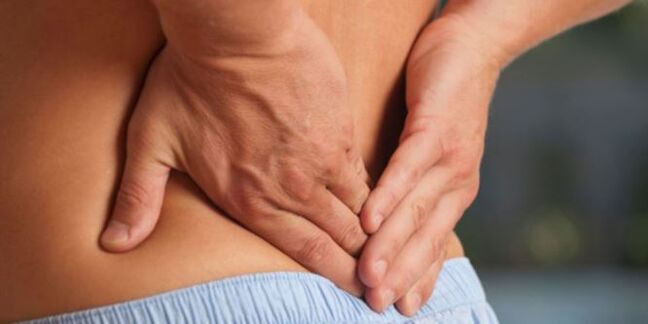
Pain in the lumbar regionthere can be many reasons.The most common causes are osteochondrosis, herniated disc, radiculitis and lumbar joint pathology.
Osteochondrosis
Osteochondrosis-natural aging of spinal tissue.
In general, it is accepted that the pain of osteochondrosis is a symptom of a disease of the spine.This is a little different.
The picture below shows a normal disk being damaged (see the damaged disk in the picture).These damages can accelerate the aging of the disc and lose its height (see "shrinking of the intervertebral space"). Next, aging begins to affect the bone tissue in the vertebrae and osteophytes grow (see "osteophytes" in the picture).
Previously, it was believed that osteochondrosis was associated with pain.Therefore, at that time, they tried to reduce the cause of pain in the back, especially with osteochondrosis.For this reason, the question of the failure of vertebronemology was raised.In 1978, the first research laboratory for the problems of spinal osteochondrosis studied the issue of osteochondrosis for more than 10 years and proved that the cause of pain is osteochondrosis, but a common pathology.
Osteochondrosis, the disc does not have nerve endings, so it is not accompanied by pain.Therefore, there is no pain with osteochondrosis.
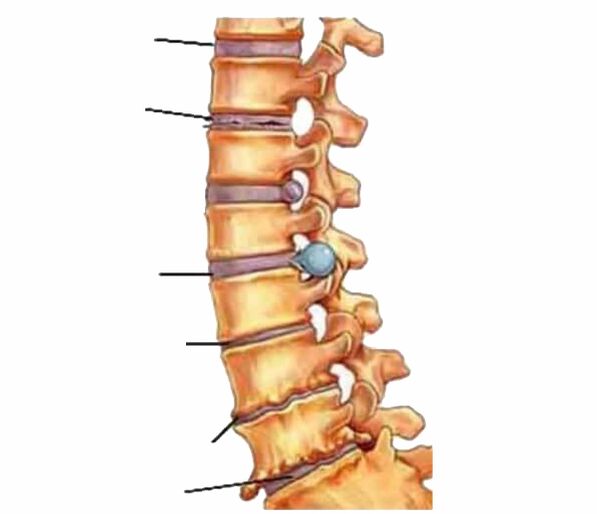
Diskinility
Disc herniation as a possible cause of pain.The image above shows several disc herniations - a small protrusion (protrusion) and a large disc herniation.A herniated disc itself does not hurt.
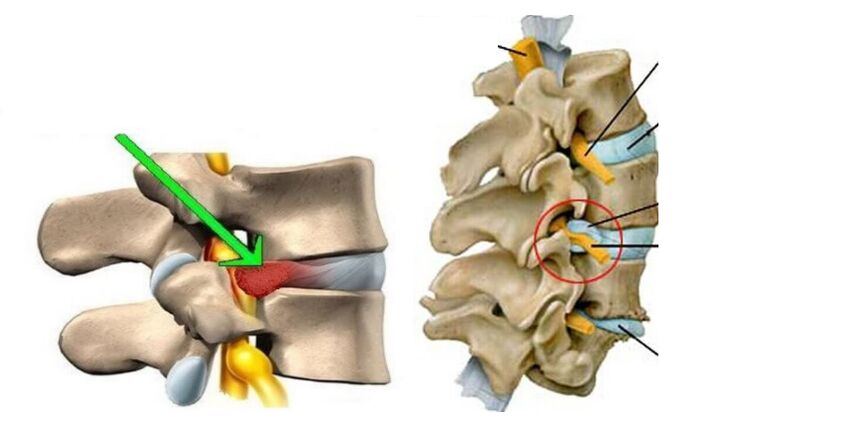
The disc does not have nerve endings (it is not innervated).Pain from a herniated or bulging disc occurs when the herniated protrusion puts pressure on the innervated tissue.For example, burnbackorbackwashlongitudinallywowganghorse.In the first case, radicular pain occurs - radiculitis (see below).Secondly, when the receptors of the posterior longitudinal ligament are irritated, back pain (lumbodni) or sharp pain - Lumbago (Lumbago) appears.
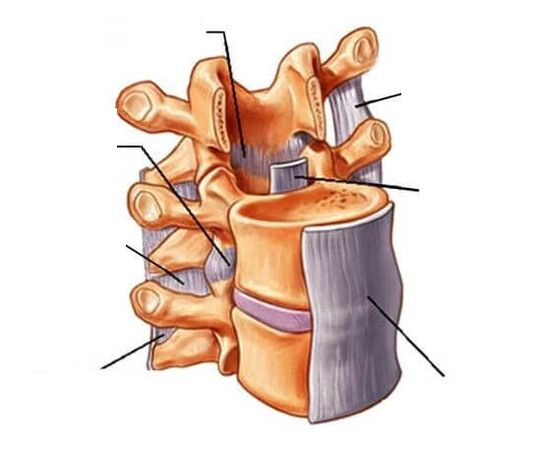
A ruptured disc can often be treated without surgery.
Spondyloarthrosis
Spondyloarthrosis is arthrosis of the joints of the spine.Arthrosis itself is characterized by a disease of the cartilage of the joints.In this case, the cartilage height decreases (degenerates, "dry") and the bone articular surfaces lose the protective cartilage layer.The joints of the spine hurt.This pain feels like lower back pain.
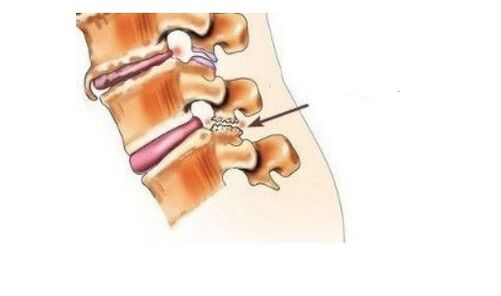
Radiculitis
Radiculitis is inflammation of the root.Radiculitis most often occurs when the root is injured by a herniated disc or spinal joints.It is usually not back pain, such as pain in the legs, buttock, buttock, or aching pain.
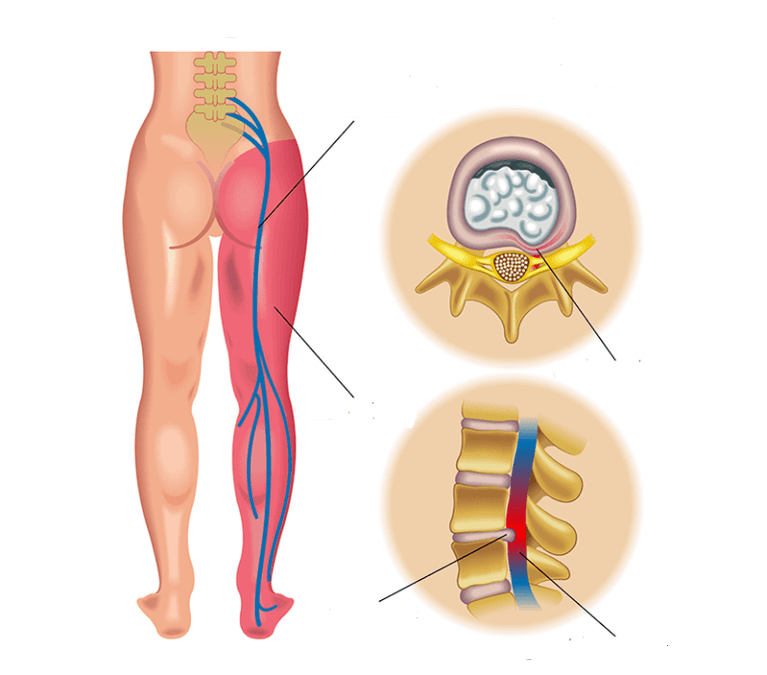
Radiculitis is most effectively treated by freeing the root.If it is caused by a disc herniation, it is necessary to reduce the herniation, which puts pressure on the root.
Pain in the back and lower back due to pathology of internal organs
Back pain is possible due to the pathology of internal organs.For example,Back pain in womenmay be the result of diseases of the pelvic organs.
Back pain in women
In women, back pain in women can be caused by inflammatory diseases of the female genital organs.
If a woman has pain in the pelvis and back, then you should always remember about gynecology.Inflammatory diseases of female genital organs are not rare.The cause is inflammation of the appendages, inflammatory diseases of the vagina and vulva, emollient diseases, emollient, endometritis, bacterial vaginitis, etc.In women, so many inflammatory diseases are caused by infections of the genital area, including sexually transmitted infections.
If the lower back pains and hurts, at the same time there is pain in the lower abdomen, the woman should be examined by a gynecologist.It is important to undergo a gynecological ultrasound to first clarify the diagnosis.
Constant nagging pain in the lower back also occursOncology in gynecology.
Cancer and back pain in women
Cancer does not hurt at first.When the pain appears in the lower back or sacral region, it may already be too late.
Many people think that tumors are accompanied by pain.This is wrong.In the early stages of tumor development, a person does not feel pain.One feels practically healthy.For example, cervical cancer is asymptomatic in the genitals.When the tumor grows, it begins to show itself.In this case, pain often appears in the lower back and lower back.The pain in the lower back is in the sacrum region.
With cancer, severe pain in the lower back does not bother you at first.On the contrary, the lower back does not hurt, but it hurts.Such pain can be the first call that will help a woman prevent the critical growth of the tumor and make a correct diagnosis in time.If the lower back or sacrum constantly hurts, you should pay special attention to avoid a disaster.
Unfortunately, if you do not pay attention to the aching pain or discomfort behind the back, the next symptom of cervical cancer can be uterine bleeding.This is the stage in which the tumor begins to break down, when the tumor may already metastasize.In the case of severe pain in the lower back, including in the spine.
Important Takeaway:If your back hurts, it's not necessarily osteochondrosis or a herniated disc.And it never hurts to get a preventive consultation with a gynecologist.After all, cervical erosion detected during examination is a prognosis.
Why does my back hurt due to urological or urogenital problems (inflammations)?
Acute lower back pain may be due to kidney disease
The lower back hurts severely with kidney disease such as pyelonephritis.
Pyelonephritis is an infectious disease that is most often caused by an increased infection.Both can be associated with sexually transmitted infections and other household infections transmitted through swimming pools, bathrooms, and personal hygiene items.For example, everything lives in towels that have not been washed for a long time.
Inflammation activates pain receptors in the soft tissues of the pelvic organs.The pain signal (impulse) reaches the back through the sensitive roots, activating the tissues.The soft tissues of the spine and the attachment points of the back muscles swell (swell).And my back hurts.
Persistent back and back pain due to dysfunction and other diseases of the gastrointestinal tract
Bloating, with ulcers or ulcerative colitis, with bloating with stomach ulcers and gastritis, pain in the back.
Stomach cancer associated with back pain
For pain caused by pathology of the gastrointestinal tract, back treatment will not improve.The cause must be treated.
Another possible cause of back pain is back loading
Excessive load on the lower back is a common cause of back pain or its aggravation.Overuse often affects the lower back joints, lumbar ligaments, tendons or muscles.Moreover, the muscles in the lower back work actively under load.Therefore, if you have pain in the lower back after exercise, it is not necessarily a disease.A muscle tear may occur.If this pain does not go away within 1-2 days, then you should think about problems in the lumbar spine.Especially if this pain is aggravated by movement.
The causes of such pains are often inflammation of the muscles and their appendages.Or - inflammation of joint capsules.
If such an operation happens more than once a year, you should look for the reason for so many complications.To do this, it is not enough to consult a doctor and carry out manipulations, painkillers, massage and other procedures.
An examination is necessary to determine the cause of such frequent exacerbations.
Soft tissue injury of the lower back
Sharp pain in the lower back when moving awkwardly or lifting something heavy is probably a spinal injury.
If you are worried about pain on this side, for example, pain on the bottom of the right, then you should think about the pathology of the partners located on the right.Or about a right-sided hernia of the lumbar spine.
Types of back pain
Depending on the duration, the pain can be acute, chronic or transient.
The pains are:
- Local pain- Pain only in the lower back.
- Exciting pain- The pain is not only in the lower back, for example, in the pelvic region, in the hips.Or, the pathology of internal organs causes lower back pain.In such cases, they talk about referred pain.
- Radicular pain- differs significantly in intensity and is localized within the innervation of the root (from outside the waist to the periphery).The reason is a violation of the nerve root of the spinal nerve (stretching, compression, curvature, compression).Movement or even coughing, according to the word, also increases the paincough.This is lower back pain that can radiate (radiate) into the leg.
- Myofascial pain- A reflex is the result of a muscle spasm.The causes of myofiScial pain can be diseases of internal organs or damage to the spine itself.Muscle spasm significantly disrupts the biomechanics of human movements.Chronic muscle spasms can also cause painful and cramping back pain.
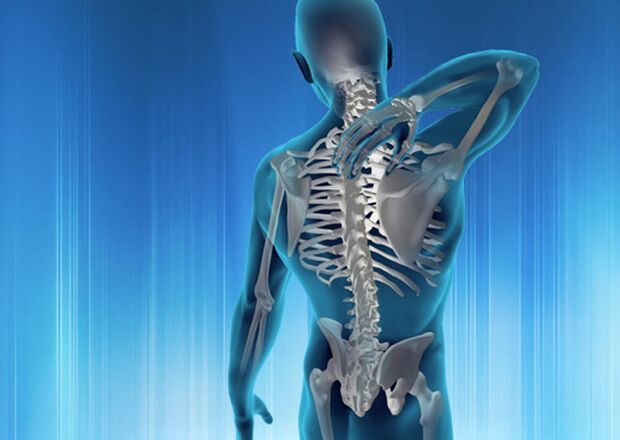
In which cases should you see a doctor for lower back pain and what should you do?
- with acute (sharp) pain in the lower back;
- If back or lower back pain lasts more than 3 days;
- If back pain appears after an injury;
- If the pain is localized in the lower back, leg and lower leg at the same time;
- If pain in the lumbar region is combined with numbness in the thigh, hip, leg, foot, groin;
- Pain in the lumbar region is accompanied by twisting of the muscles of the limbs (valehiks);
- If the function of urination and defecation is disturbed (retention of urine, lack of confidence, frequent urination or desire to urinate);
- If the perineum is numb.
- If the pain in the back or lower back (sacrum) is constant, worse in the morning
What to do if you have back pain?
The causes of lower back pain are different, so the treatment of back pain should be carried out only after diagnosis and after diagnosis.Any pain in the vertebral region requires medical examination and clarification of its cause.
A doctor's visit has 3 tasks:
- Make a correct diagnosis.
- Eliminate pain.
- Formulate measures that will help protect the patient's health so that the pain does not recur.
Possible causes of back pain
The following diseases can be the cause of complaints in the lower back:
- osteochondrosis;
- osteoarthritisOpen
- spondylolisthesisOpen
- spondylosisOpen
- Ankylosing spondylitisOpen
- spondyloarthropathyOpen
- muscle damageOpen
- ligament damageOpen
- disk space "HerniaDisc 98% (World Statistics) 98% are treated without surgery"Open
- atherosclerosis of the abdominal aorta;
- Malignant neoplasms of the spineOpen
- metastases to the backOpen
- Urinary tract infectionsOpen
- spinal stenosis;
- Biliary tract diseasesOpen
- Penetrating duodenal ulcerOpen
- pancreatitisOpen
- kidney diseaseOpen
- dissect an aneurysm of the abdominal aorta;
- bleeding into the retroperitoneal tissueOpen
- Inflammatory diseases of female genital organsOpen
- Oncological diseases of female genital organsOpen
- endometriosisOpen
- prostatitisOpen
- prostate cancerOpen
- flow into the epithelial coxaeOpen
- embolism of the veins of the lower extremitiesOpen
- non-stopOpen
- pseudo-intermittent clarmaOpen
- destroy atherosclerosis of the vessels of the lower extremities;
- rheumatoid spondylitisOpen
- Polymyalgia RheumaticaOpen
- fibromyalgia
- depressionOpen
- Other.
Treatment of lower back pain (back pain)
An initial diagnosis is made at the initial stage of treatment with low back (back) pain.This is done on the basis of a survey, medical history, neurological and orthopedic examinations.At this stage, drugs can be prescribed to reduce pain, tissue swelling and general anti-inflammatory therapy.Reflexology, local drug effects, regional anesthesia, lower back pain, laser therapy, etc.Different injection methods are effective for treatment.Rest is important during drug treatment in acute and subacute periods.Massage, massage, manual therapy, which aggravate the process, are not indicated.In the acute period, traction is also not used: the device, on inclined boards, wall bars.
To treat lower back pain more effectively, you need to understand the cause.For this purpose, the patient is further examined to clarify the diagnosis.It can cause a lot of pain in the lumbar region.The indicative list of diseases accompanied by lower back pain is shown above.Each of them has its own treatment protocol with a list of the most effective approaches, drugs and procedures.The protocols also contain information about methods that are not indicated for this disease.For example, for inflammatory diseases of the spine (spondylitis, spondyloarthropathy, spondyloarthritis, ligenamentitis, etc.), manual therapy, massage and physiotherapy are not indicated due to complaints due to complications and complications.It is necessary to determine the cause of inflammation and treat it.
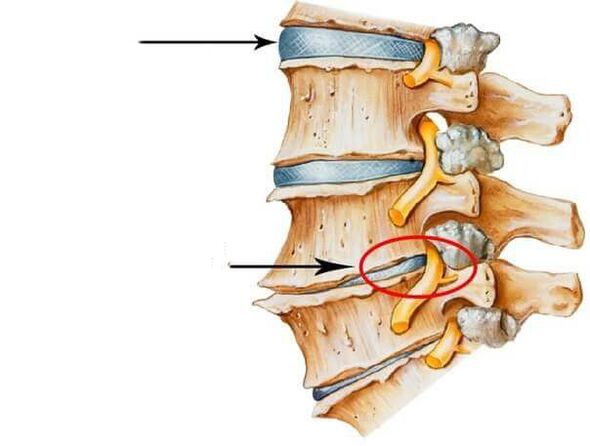
Spondylosis visible on radiographs can occur without clinical symptoms and often masks a more complex disease.Therefore, the treatment of spondylosis is useless and often dangerous: removing bone growths in the spine is unrealistic and unnecessary.The patient may encounter exotic diagnoses such as "muscle damage", "muscle spasm", "ligament damage".Unfortunately, talk about muscle spasms, because the cause of pain is not always true.Muscle spasm of the panvertebral muscles is a reflex act and, as a rule, accompanies most diseases, including those not related to the spine.Muscles are actively involved in the segmental reflex process and can respond to any irritation both in the back and outside.The so-called "spasms" from the pathology of internal organs, diseases of the pelvic organs, kidneys, kidneys, kidneys or tumor, diseases of the charge, retroperitoneal tissue diseases and more.Osteopathic methods of working with moderately spasmodic paravertebral muscles can temporarily alleviate the condition at the reflex level.Manual therapy, osteopathic methods, inclined plate, massage, traction, physiotherapy will not help, for example, with prostatitis or adenomatosis.The so-called "therapeutic extraction".In this case, "muscle spasms" are only the desires of the manipulator.
Treatment of herniated discs and herniated discs
Often, an MRI will reveal a hernia or protrusion that is interpreted as the cause of back pain.The question immediately arises: remove the hernia or try to cope without surgery?
The first thing to do- Clarify that this tear is clinically significant.The fact is that if you take 100 healthy people without back pain and an MRI diagnosis, if you perform an MRI diagnosis, 80% of them have some kind of disc protrusion ("herniation") that does not give any symptoms.
Often, a herniated disc can be an incidental finding, often related to another cause of pain.
At the same time, experience shows that not all hernias are clinically significant.In order to clarify the causes of pain, a comprehensive medical history was taken, a neurological examination was performed to identify neurological deficits, pelvic organ function was clarified, etc.
It turns out that not all herniated discs and disc protrusions need to be operated on.No more than 2% of patients require such an operation.
Neurosurgeons have established absolute indications for well-defined surgery.More often than not, a herniated disc is not a reason for emergency surgery.
Disc herniations and protrusions, including traction, fixed motor patterns on the back, physiotherapy, reflexology methods, etc.
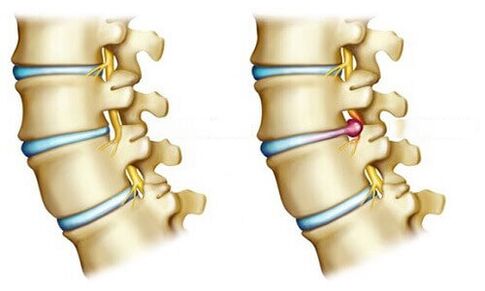
When making a decision about surgery, one should take into account the relative indications of surgical treatment officially prescribed by neurosurgeons.Each specific case is considered separately, taking into account clinical symptoms, medical history, anamnesis, neurological and orthopedic examinations, apparatus and laboratory examination results.
In particular, it should be noted that surgical intervention is often more effective after surgery than before surgery.
Osteochondrosis, spondyloarthrosis, spondylosis, etc.Some degenerative changes in the back are treated based on identifying the trigger of the pain syndrome.
Massage and hand therapy treatments are very effective treatment methods when there are indications for their use.Over the past three decades, the institute has developed optimal protocols for the management of patients with low back pain, taking into account the possible range of their causes.


















































